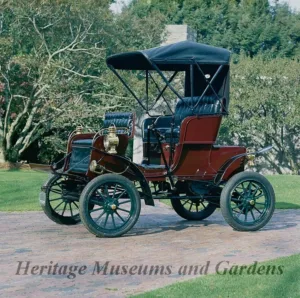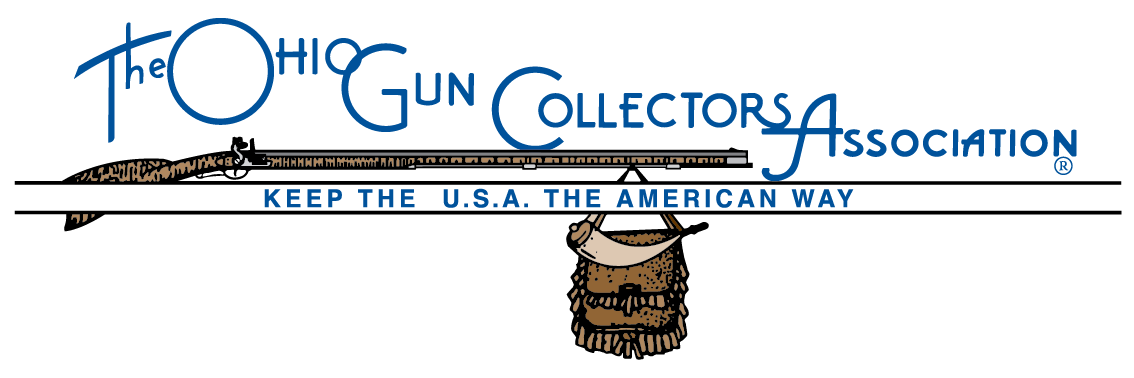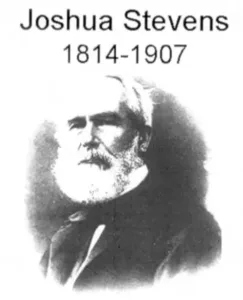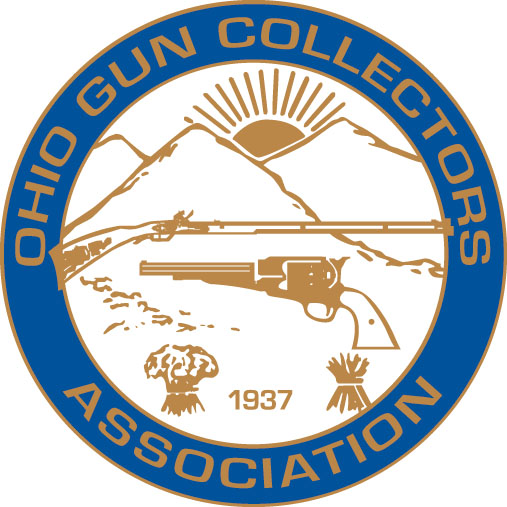Introduction – Why Stevens Rifles 1892 to 1916
Joshua Stevens born in 1814 worked for many of the New England gun manufactures. In 1864 he
received a patent for his tip up pistol. This patent stated Stevens in the gun business in his own right.
The tip up evolved into several pistols, and rifles. Stevens began building a large and successful company

Stevens Car
that produced not only guns and related products, but tooling, scopes, and even cars. In 1886 the firm name became the J. Stevens Arms & Tool Co. Joshua retired at the age of 82, in 1896.
Towards the end of Joshua Stevens’ career, the firm was bringing out falling block rifles. These were a significant step forward. The earliest being known as side plate models brought out in 1892, built as a small action known as the “Favorite” and the large model as the “Ideal”. Production of side plate model was limited to about 2,600 favorites and approx. 750 Ideal models. These evolved into the non-side plate models, introduced in 1894. The Favorite retained its name. The large frame went from model numbers 107-110 to the 44 Action, but still known as the Ideal Model, offered in various model numbers 44-54.
Stevens then decided to go after the Schuetzen target rifle market that was not really being served by
any other manufactures. The 44 action was a cast action, which had sufficient strength for black powder,
but the 1890s was the era of the adoption of smokeless powder and much higher chamber pressures
resulted. The answer was the 44 ½ action reportedly created by Harry Pope, introduced in 1903.
Harry M. Pope was a master barrel maker who devoted himself to target shooting and the perfection of
accuracy. He was a noted shooter, but was held in highest regarded as a master gunsmith. Pope went
in-house with Stevens in 1901, producing rifles with his rifling, accessories, and other technical
influences. The guns were marked “Stevens-Pope”. In addition to producing guns, Stevens-Pope worked
on others guns as well. Yes, a different time. The 44 ½ action became the dominate action for high grade
fire rifles through its production ending in 1916.
In 1914 the Stevens Hill Plant and the car production facility were taken based on war time needs by
New England Westinghouse. Westinghouse had been contracted to produce 1.8 million Mosin-Nagant
Rifles for the Russian Government. Stevens then lost the River Plant to exigent production as well. After
that Stevens was acquired by Savage Arms Co., and for the most part production ended of the pre-WWI
high quality single shot rifle production ended. The collection presented focuses on high water marks of
Stevens quality and target rifle perfection 1892-1916.
The Stevens time period of 1892 to 1916 saw Stevens transform its rifles from Tip Ups to Falling Block
Design, with outstanding results. Stevens developed target rifles of the first order during this period and
partnered with the premier target rifle maker of the time Harry M. Pope. The result being the Steven-
Pope Rifles which rank amongst the finest target rifles ever produced. Stevens was also a scope, pistol,
lever action rifle and shot gun manufacturer during this period. Stevens also produced countless boys’ rifes.
This display is focused on its finest products.
Below is a 1900 catalog that details extensively Stevens’ offerings. Also below is article by OGCA Past
President Thomas L. Kyser on the history of Stevens and in particular its pistols.





